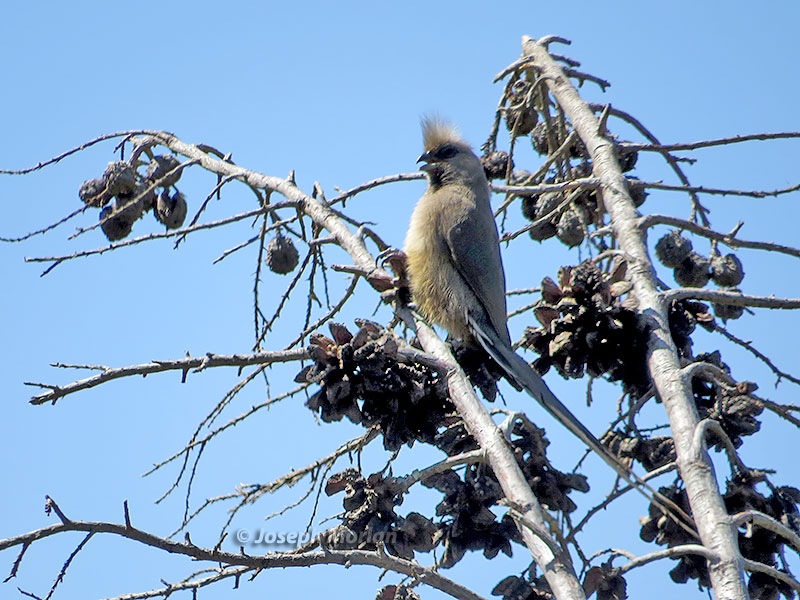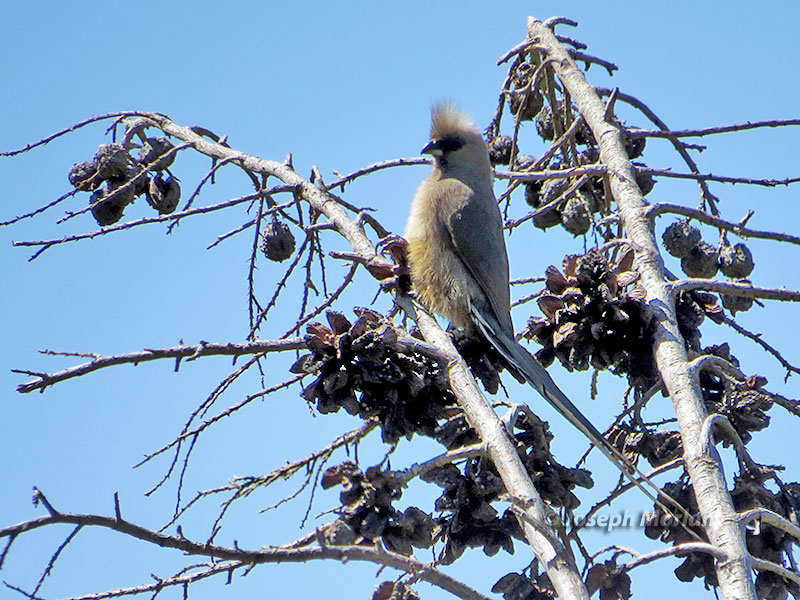

The dark mask, bicolored bill and black feet distinguish this species from the White-backed Mousebird. Mousebirds
are placed in their own order, the Coliiformes. This is the only order of birds confined to Sub-Saharan Africa.
They have been called "living fossils" because their lineage includes the last survivors of a much larger
and more diverse group of birds that lived during the late Paleogene and Miocene. Although they are superficially
passerine-like, they do not have the typical passerine foot structure. They sometimes hang from a branch with all
four toes pointing forward, as seen here. This toe arrangement is called syndactylous and the only other birds
with syndactylous toes are the swifts. Notice the soft hairlike body feathers suggesting a small rodent. All Mousebirds
have a very long tail, longer than the body. Sexes are alike. They reportedly go into a state of torpor or semi-hibernation
to conserve energy, an adaptation for their low-calorie, fruit-based diet.
Clements recognizes 17 subspecies. HBW breaks these up into three groups:
- The “nigricollis group” in the northwest part of its range.
- The “leucotis group” in the East.
- The “striatus group” in the South.
Each group reportedly hybridizes only rarely with the others suggesting they may qualify as full species. This photo shows a member of the southern group characterized by its all black upper mandible and lack of a contrasting pale ear patch. Canon PowerShot SX50 HS.
References:
de Juana, E. & Kirwan, G.M. (2018). Speckled Mousebird (Colius striatus). In: del Hoyo, J., Elliott, A., Sargatal, J., Christie, D.A. & de Juana, E. (eds.). Handbook of the Birds of the World Alive. Lynx Edicions, Barcelona. (retrieved from https://www.hbw.com/node/55676 on 23 June 2018).
Hockey, PAR, WRJ Dean, and PG Ryan, eds. 2005. Roberts' Birds of Southern Africa. 7th ed. Cape Town: John Voelcker Bird Book Fund.
Sinclair, I., Hockey, P.A.R., Arlott, N. (2005). The Larger Illustrated Guide to Birds of Southern Africa. Struik, Cape Town.